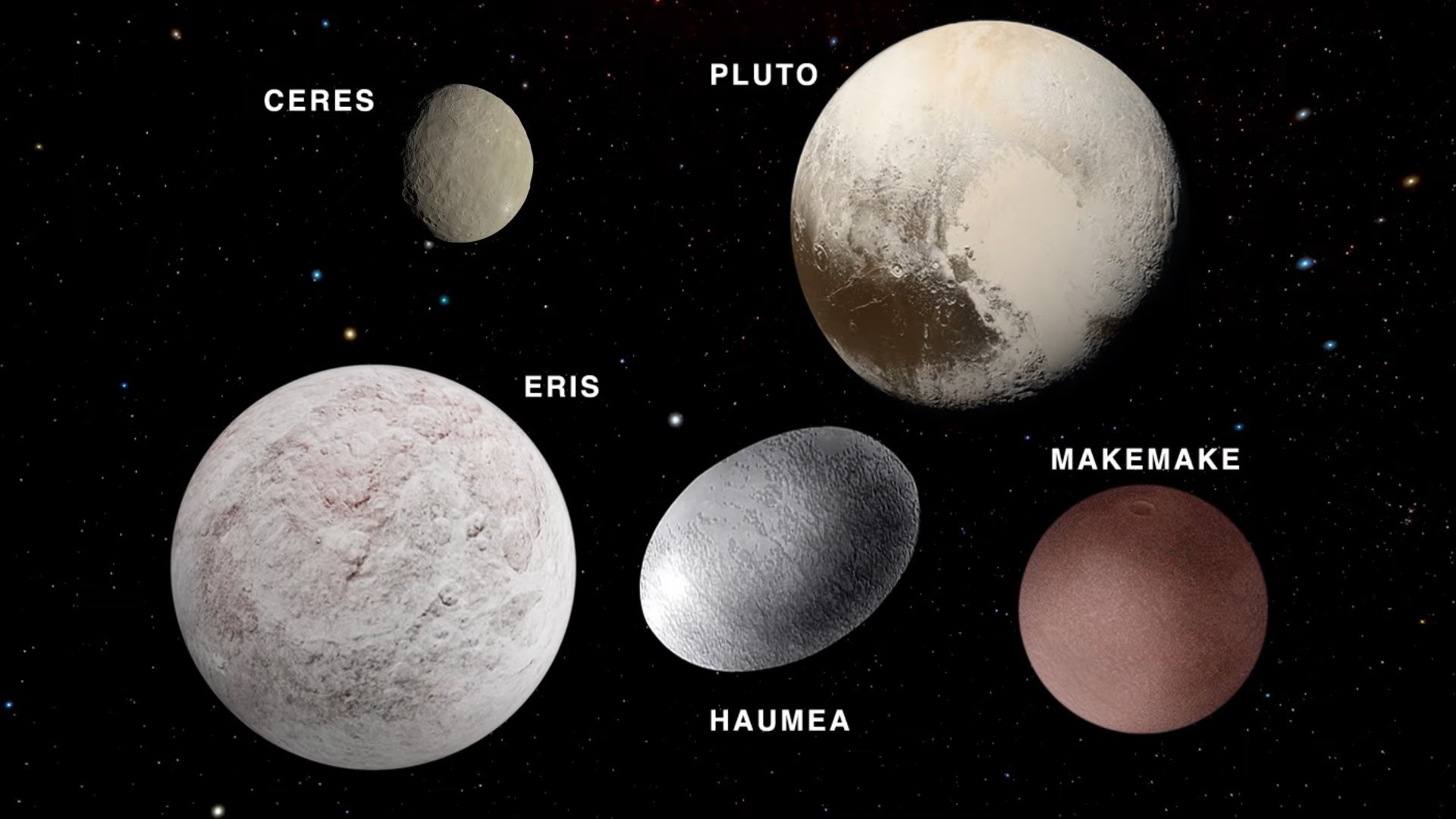Dwarf planets are fascinating celestial objects that share characteristics with planets but differ in key ways. Understanding what defines a dwarf planet helps us appreciate the diversity and complexity of our solar system and beyond.
Defining a Dwarf Planet
The term “dwarf planet” was formally defined by the International Astronomical Union (IAU) in 2006. This definition emerged after the discovery of several Pluto-sized objects in the outer solar system, prompting astronomers to clarify what constitutes a planet versus a smaller, similar body. According to the IAU, a dwarf planet must meet the following criteria:
- Orbit the Sun: Like planets, dwarf planets must directly orbit the Sun and not be a satellite of another planet.
- Have Sufficient Mass for Hydrostatic Equilibrium: This means the object’s own gravity must pull it into a nearly round shape. This characteristic distinguishes dwarf planets from smaller, irregularly shaped asteroids and comets.
- Not Cleared its Neighborhood: This is the key difference between a planet and a dwarf planet. A planet has gravitationally dominated its orbital zone, clearing away other objects of comparable size. A dwarf planet, however, shares its orbital space with other objects.
- Not a Moon: A dwarf planet cannot be a moon orbiting another planet.
The Recognized Dwarf Planets
Currently, the IAU recognizes five dwarf planets:
- Ceres: Located in the asteroid belt between Mars and Jupiter, Ceres is the smallest dwarf planet and the only one in the inner solar system.
- Pluto: Once considered the ninth planet, Pluto resides in the Kuiper Belt and is famous for its complex surface features and multiple moons.
- Haumea: Located in the Kuiper Belt, Haumea is notable for its elongated shape, rapid rotation, and two moons.
- Makemake: Another Kuiper Belt object, Makemake is the second-brightest dwarf planet and lacks a known moon.
- Eris: Located in the scattered disc beyond the Kuiper Belt, Eris is slightly smaller than Pluto but more massive.
Ceres
Ceres is the only dwarf planet located in the inner solar system.
Pluto
Pluto was long considered our solar system’s ninth planet.
Haumea
Haumea is one of the fastest rotating large objects in our solar system.
Makemake
Makemake is the second-brightest object in the Kuiper Belt.
Eris
Eris is one of the largest known dwarf planets in our solar system.
The Case of Pluto: A Shift in Perspective
Pluto’s reclassification as a dwarf planet in 2006 was a controversial decision. Discovered in 1930, Pluto was long considered the ninth planet. However, as astronomers discovered other objects in the Kuiper Belt similar in size to Pluto, it became clear that Pluto was just one of many such bodies. The IAU’s definition of a dwarf planet formalized this understanding.
Despite its demotion, Pluto remains a captivating object of study. NASA’s New Horizons mission provided the first close-up images of Pluto, revealing a surprisingly complex and geologically active world.
Why Study Dwarf Planets?
Dwarf planets offer valuable insights into the formation and evolution of our solar system. They represent a distinct class of objects that provide clues about the conditions in the early solar system and the processes that shaped the planets we know today. Studying dwarf planets like Ceres and Pluto through missions like NASA’s Dawn and New Horizons can uncover new information and add to our existing understanding of the universe.
The Future of Dwarf Planet Exploration
While only five dwarf planets are officially recognized, astronomers estimate that there may be dozens or even hundreds more in the outer solar system. Future missions to these distant worlds could revolutionize our understanding of planetary science and the diversity of objects in our solar system. Learning what a dwarf planet is and how it differs from other celestial bodies allows one to gain more insight into our universe.

